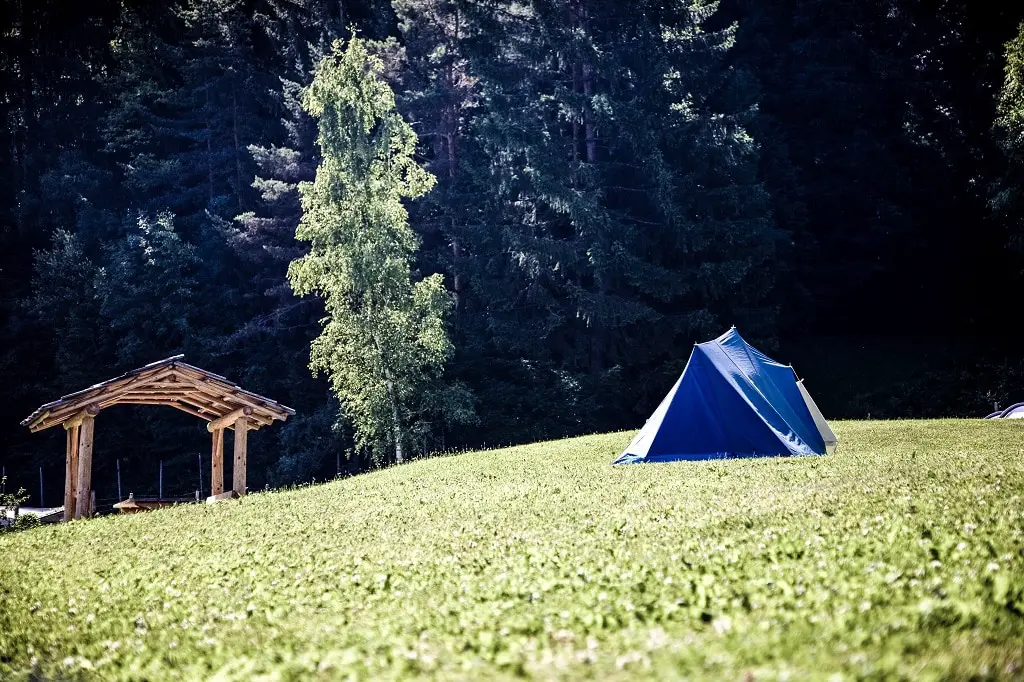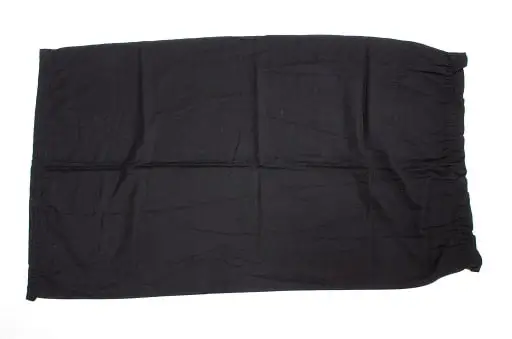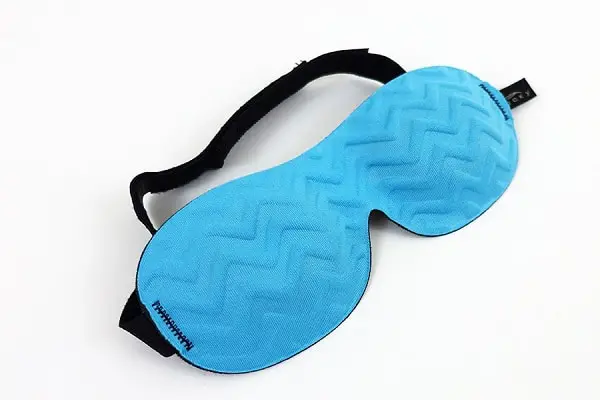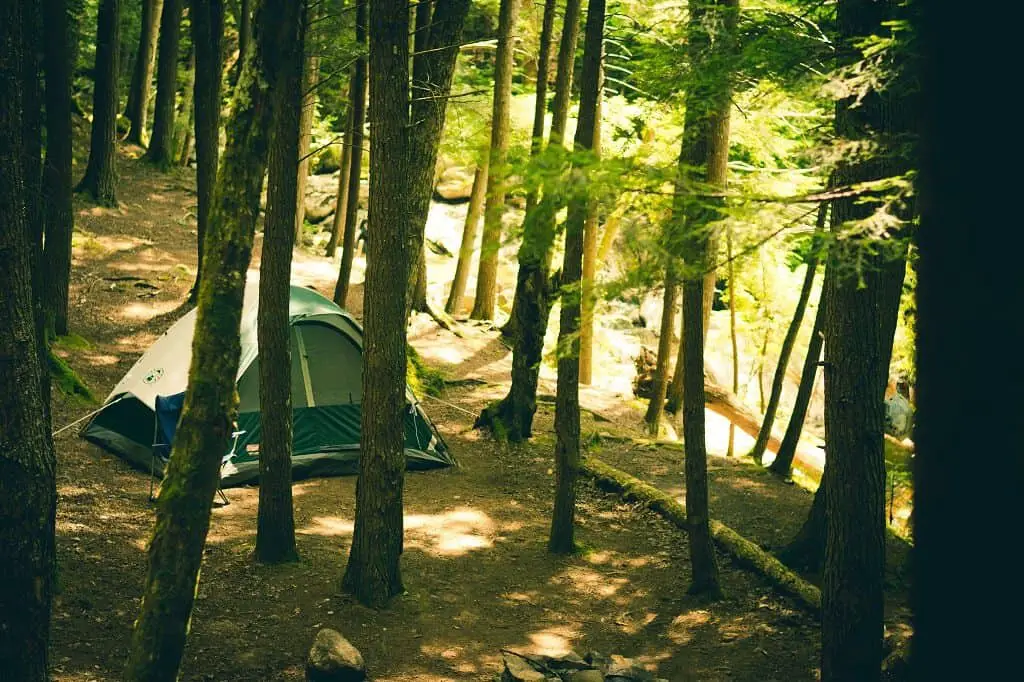I remember people used to ask me what was the time I woke up during my camping adventures. That question seemed odd at first, since I woke up as soon as I could, not to waste any daylight. But now, when I think about it, I’ve never used an alarm to wake up early. I just woke up naturally due to sunlight which came through my tent’s ceiling. What if I could earn a couple of hours more? Maybe this way I would have got that boost of energy I needed so badly on the end of each hiking day. So how to make your tent darker and gain that extra sleep? Let’s try answering that question.

I’ve spent a couple of hours searching across the internet possible solutions for that issue, and I did come up with results. You may darken your tent by using blackout materials; however, it is crucial to consider approaches that will maintain ventilation. In this article, I will describe different ways to do so and will show you the advantages & downsides for each one.
Use a Blackout Material
The problem with most modern tents is the bright color their bedroom pod features.
I’m not saying modern tents are misdesigned – they do feature ventilation, lightweight and water resistance.
Their bright color was meant to answer one crucial need and its temperature. While dark colors absorb heat, bright ones tend to send back most solar radiation.
If your tent features a brightly colored bedroom, one of the things you can do is trying making it darker.
Get yourself a blackout material from the closest hardware store that would serve as an improvised light absorber. If you wish to buy one online, I believe you should take a look at this one from Amazon. I haven’t used it in person, although it had received hundreds of satisfied reviews.

One way to use it is by building yourself an inner tent, basically improvising something that resembles a mosquito net.
If you like that idea, I recommend that you read my article in which I described why you should put a tarp over your tent and how actually to do it.
I’ve also written elaborately about 15 camping knots which might help you do so. I’ve literally spent days pouring through the data for these too so I can provide you with the most useful and accurate data.
Nevertheless, you should keep a little distance between it and the tent’s wall, so you don’t compromise the tent’s ventilation.
Drape Your Bedroom Pod
That one is quite similar to the first solution; however, it approaches the issue from the outside of the tent.
I’ve decided to separate the two because this one has a higher risk for condensation.
If you are draping your tent with a blackout material, there is a good chance you will leave no space in between.
In other words, it is very likely that the cover will be sitting on your tent tightly, leaving no chance for ventilation. Why is ventilation so important?
Well, it allows two main things. First, it will maintain air circulation so that you won’t feel suffocated during the night.
Second, it will lower condensation coming from body sweat, or the outside air humidity.
Lowering that would prevent your tent from getting wet, or perhaps from your sleeping bag getting damp. If you do suffer from wet sleeping bags – please read my article regarding that issue. I was suffering from this a lot until I finally realized what caused it and how to overcome the problem.
If you choose to go for this method, you should keep a distance between the blackout material and the tent’s walls and roof.
In my opinion, the best way of doing that is by hanging it from above, using a tree branch for example.
Blackout The Person
That one goes a little bit around the issue; however, it might also serve you well. Darkening your tent is possible, yet there are more natural and elegant solutions.
One of them is merely covering your eyes, using different kinds of products. You may get yourself a sleep mask, for instance.

Personally, that is what I’ve been doing most of my travelings, especially during flights.
That one is among my favorites solutions because a proper mask can be barely felt, and you can still enjoy the advantages of a bright colored tent.
Another way would be using a hat, a hoodie or perhaps even your sleeping bag. Frankly, every method is legitimate, as long as light cannot go through it and wake you up.
Chose a Campsite Without Light Pollution
What could be more natural than using mother nature darkening products? I know that sky view can be tempting – who doesn’t like watching a falling star on a romantic night?
Nevertheless, if the sunlight is a severe issue for you, consider camping somewhere with less light pollution. Don’t worry about nighttime, you could always use the red light headlamps feature – these would preserve your nightvision.

You can use trees, for example, and still, enjoy the beautiful sound of singing birds in the morning.
Another way, which is a bit smarter, would be camping on the west side of a hill. That one is perfect for those of you who suffer from the sunrise light penetration.
If you are sleeping on the west side, light coming from the east will be blocked until the later morning hours.
In addition to that, you can also choose a specific campground with some cover from above. If none of these worked, you might also consider renting a cabin, even just for a couple of nights.
Get a Dark Colored Tent
As I’ve already said before, modern tents usually feature a bright bedroom pod. Some brands even design tents with dark colors, yet they spare the bedroom section.
The idea behind this is keeping you fresh as much as possible when the sun comes out. That could be very annoying; however, you should keep in mind that there is a thought behind this.
You could easily get yourself a dark-colored tent, although keep in mind that it would absorb more sunlight. That might be one of the reasons why your tent gets too hot. Nevertheless, you could always build your own camping shower to get more refreshed.
Nevertheless, you shouldn’t mind that much about the entire tent’s color, focus on the bedroom pod instead.
One of the most popular, and that I personally highly recommend is the Coleman Carlsbad Tent with Screen Room. That one features a dark room technology, which should block approximately 90% of solar radiation so that you can keep sleeping past sunrise. This tent has done a fantastic job with my camping adventures and is literally flooded with positive reviews.
If you are planning on family camping, you might consider getting yourself a large camping tent. In that case, you might think the Ozark Trail 10-Person Dark Rest Instant Cabin Tent, with the same darkening technology as the Coleman’s.
Darken The Inner Tent
That solution is perfect for tents that feature an inner tent. Usually, those tents got a large cover, with one or two separate pods underneath.
So how does it make any difference? The idea is that the inner tend is not attached to its cover with stitches so that you can take advantage of the gap between the two.
If your tent does feature that, you may take a towel, or some blanket (frankly anything that blocks light), and occupy that potential space.
This way you can prevent specific parts in your tent from getting sunlight. The ventilation problem mentioned above still exists with this method.
The main problem with this is that your body perspiration got nowhere to evaporate. To prevent condensation, you shouldn’t cover the entire inner tent – leave some areas open for ventilation.
Travel Tent For a Baby
If you are a parent who is camping along with a baby; that might be the answer for you.
There are different ways your beloved little ones can sleep in the wild – one of them would be a baby travel tent.
Babies awakening is a common issue, which can get even worse when camping.
Not only it bothers other sleepers, but it may attract wild animals as well (you may read more about it on both my articles – Is Camping Safe? & Is Trekking Dangerous?).
However, I am pretty sure that you have chosen your campsite carefully beforehand if you decided to go with a baby.
Babies can be susceptible to sunlight and may wake up quickly as the sun pops out.
If you got yourself a baby travel tent, which I highly recommend (because this one would also protect from insects and snakes), you could try covering it with a towel.
That, in turn, would prevent sunrise light from waking them up. Nevertheless, and this is a big one, DO NOT COVER THE BABY TENT ENTIRELY!
That would block air circulation and may end up with suffocation. Lay the towel partially, covering only the parts in which sunlight gets in.
Should I Dye The Inner Part?
The answer for that depends on the type of fabric your inner tent features. In general, there are two type for that – cotton and polyester.
If your tent’s inner is made with cotton – dying it shouldn’t be an issue. Cotton fabrics tend to absorb dye easily, just as you can see with clothing.
As opposed to that, a polyester/nylon fabric doesn’t do too well with dye. Usually, it doesn’t dry out properly, and the color doesn’t stick (yet, still possible).
However, if you have chosen to dye up your tent (cotton/nylon), you have to make sure to ventilate it properly afterward. Dye fumes are unhealthy and might be dangerous to inhale, especially within a close place, such as your tent.
Also, make sure that you dry your canvas entirely before repacking it. Otherwise, your tent might get sticky, and its water resistance might be compromised.
Damp, compact packing could also haste mold and mildew growth and make your tent smell. Luckily, if that happened to you, there are ways to eliminate the fungi.
What Are The Risks Associated With Dark Tents?
Dark tents can be tempting – after all, who doesn’t want that extra sleep? Nevertheless, you should also take into account its downsides.
First, it is hard to know what’s going on the outside, which is extremely important in the wild.
Roaming bears are among the most deadly and dangerous scenarios a camper could encounter. On that matter, I highly suggest that you read my article explaining what you should do if a black bear is outside your tent.
In general, the right way to act is by keeping silence and not making any sharp movements. Although, if it’s hard to see what’s happening on the outside, you can quickly get surprised by that unwanted guest.
In addition to that, a dark tent will be less noticeable during the daytime. In a case you are camping in a place where hunting is allowed, standing out will be on your favor.
What is That Darkroom Technology?
Darkroom technology, also known as ‘darkroom tents,’ features several techniques to accomplish that darkness. So what did these producers do?
The first technique was done by adding a specific dark fly to the design of the tent. This way they reduce glare and maintain dark even past sunrise.
Another method was adding extra panels underneath the ceiling mesh, as can be found in some tents produced by Ozark and Coleman, as described above.
In addition to that, one approach was to darken the sleeping pod in specific, so the rest of the tent maintains its bright color.
Conclusions
Waking up early due to sunrise is an absolute nightmare, especially if you are camping with children.
We all need this extra sleep since outdoor activities usually burn out a significant slice of energy.
Modern tents feature their benefits, such as lightweight, water resistance and ventilation. Nevertheless, one significant disadvantage is that they usually feature a bright colored bedroom pod.
The idea behind this is keeping your sleeping area cool since bright colors absorb heat less than dark ones. That golden color may be problematic when it comes to sunlight penetration.
However, there are a few steps you could take to overcome this issue. You may use a blackout material, for example.
Simply improvise your inner tent, resembling a mosquito net. You may also use it to drape your bedroom pod, although you should keep in mind to leave a gap between the two, so you maintain ventilation and avoid condensation.
Another approach will be getting a new tent that features a darkroom technology, which will allow you to stay asleep even after sunrise.
You may also try dying the inner part of your tent, although you should check the fabric type beforehand. While cotton fabric can be easily dyed, the synthetic form (nylon) usually doesn’t catch it too well.
If you decide to go for that method, make sure you ventilate your tent properly afterward, so you won’t inhale dye fumes.
Keep in mind that darkening your bedroom does feature a few disadvantages. It will be hard to notice dangerous animals that roam outside, such as bears or snakes, for example.
Well, that will be it. I hope my article gave you a direction to deal with your light tent situation.
After reading this, you probably got yourself a few hanging questions. Let me know about them and your hesitations by leaving a comment below!


